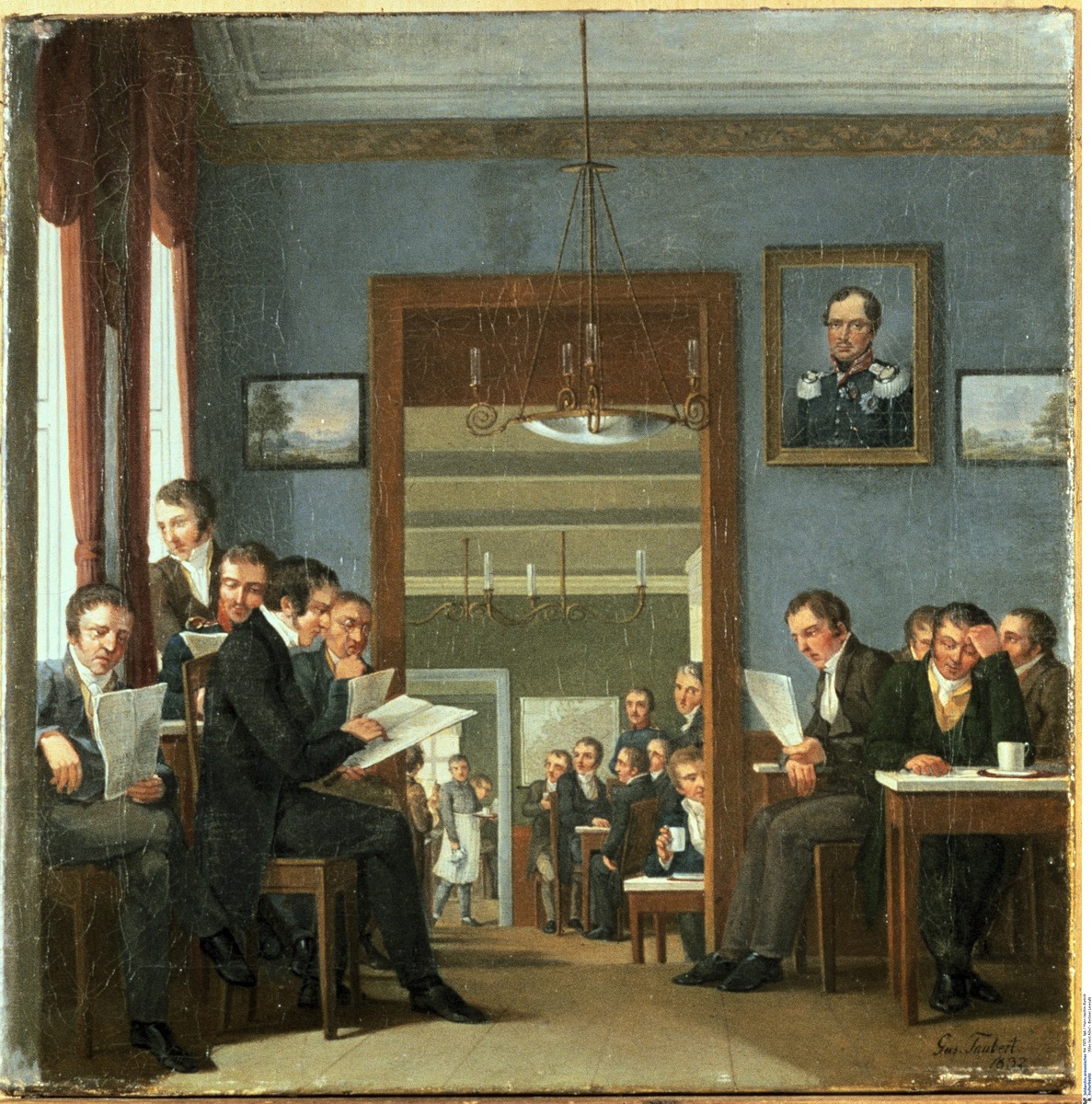Abstract
The period 1815–1848 saw the introduction of general educational reforms, the spread of mandatory elementary education, and the growing availability of books and newspapers. As a result, Germany’s reading public expanded enormously during those years, peaking during the Revolution of 1848–49. The painting below, with the telling title Everyone Reads Everything [Alles liest Alles], attests to the literate public’s voracious appetite for reading materials. But the ever-watchful presence of the sovereign, literally in represented in this scene by the portrait of King Friedrich Wilhelm III (1770–1840), raises doubts as to whether these avid readers truly had access to “everything." Following the Wars of Liberation against Napoleon, the Prussian monarch abandoned further reforms in favor of restoration; in 1819, he opted for repression in accordance with Metternich’s Carlsbad Decrees, which included vigorous press censorship. That this reading café serves an exclusively male clientele speaks to contemporary gender roles, according to which women belonged in the private realm of home and family, not in the public sphere. Oil painting by Gustav Taubert (1755–1839), 1832.
